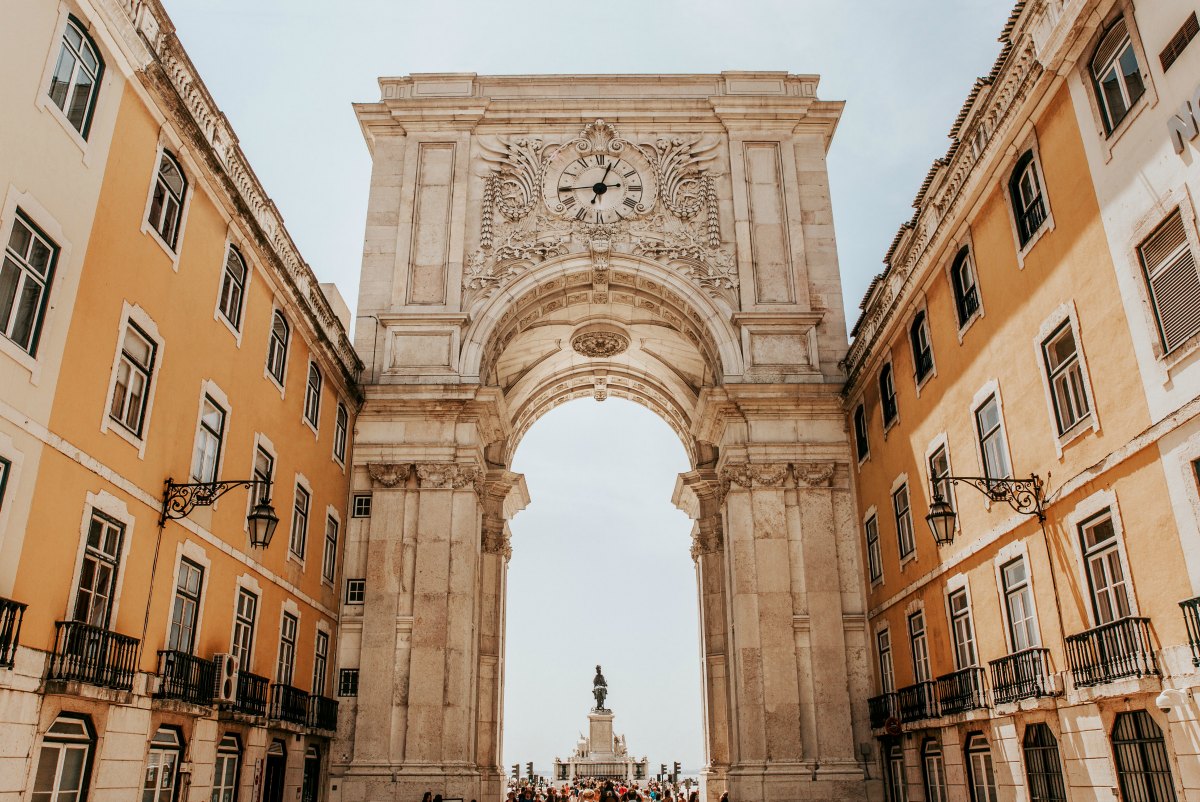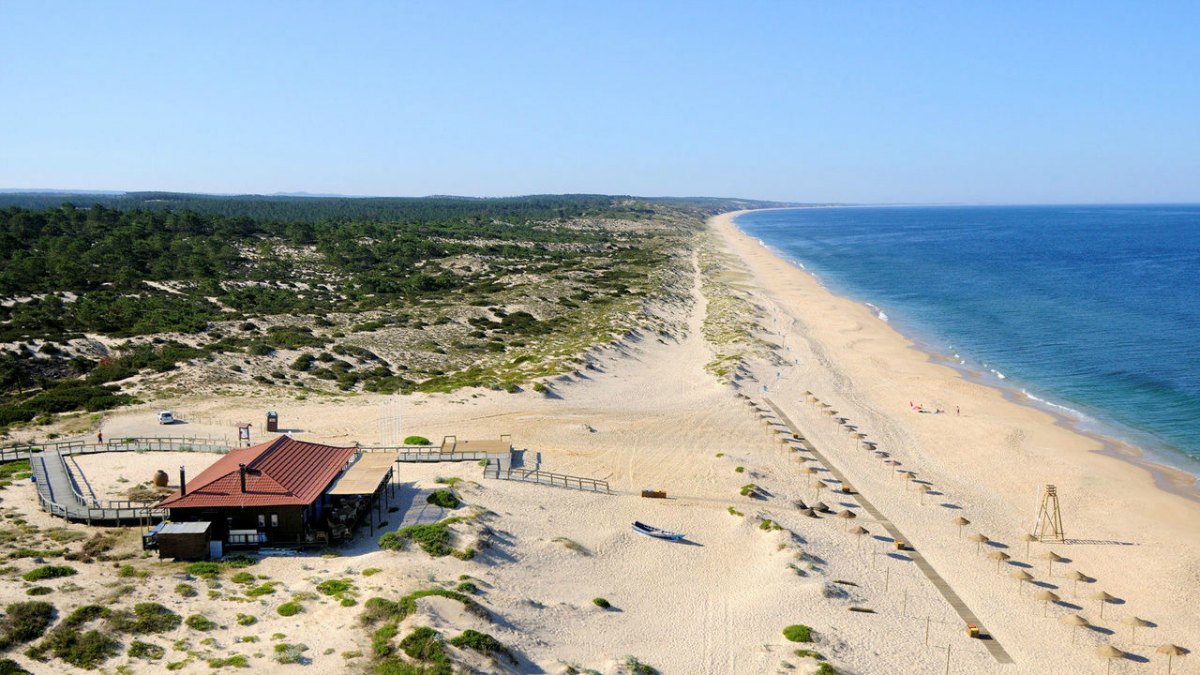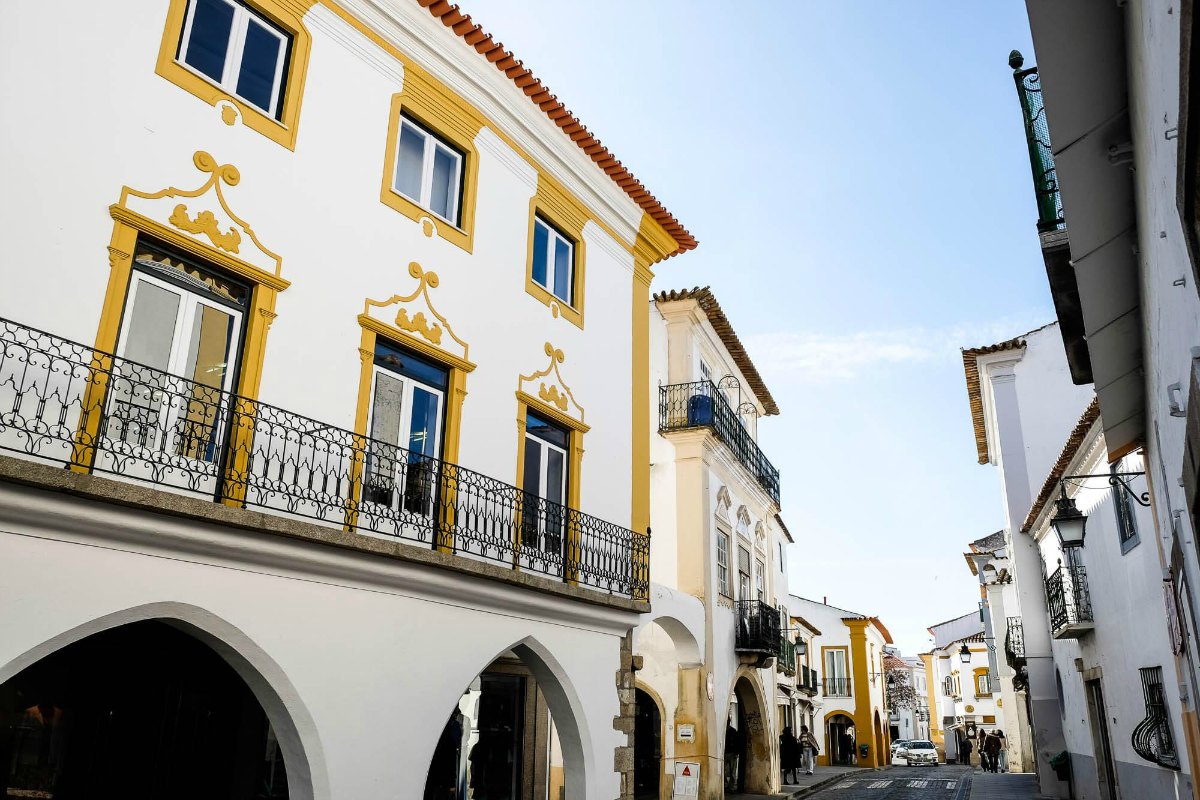Portugal is hot right now, and I don’t just mean because of the balmy 25 degree weather. Insta-stories are dominated by friends and colleagues enjoying Pasteis de Nata in Lisbon parks, sunning themselves in the Algarve or whooping around on motorboats between The Azores.
The country is having a moment, due in no small part to its unintentionally having become an idyllic and convenient haven for nearby Europeans looking to escape the political storms gathering in their own countries. Portugal feels relaxed; its people are justifiably proud of how friendly and welcoming they are, of their food, fado and festivals.
This is a moment that looks set to last, and so, buckling under the weighty pressure of social media brags and gushing first-hand testimonies, I packed up and embarked on a luxury seven-night, multi-centre roadtrip, focusing on three very different Portuguese destinations: Lisbon, Comporta, and Évora.
Lisbon – 4 nights
How to get there: More than 20 daily flights from London terminals and daily flights from most regional airports
Where to stay: Palacio Belmonte
Perfect for: Culture lovers, foodies, city break specialists
Portugal’s capital is the logical starting point for this kind of trip, delivering as it does an undiluted dose of culture, heritage and outstanding restaurants in a relatively compact space. A 15-minute taxi ride from Lisbon Airport brought us to Palacio Belmonte, a unique hotel slap bang in the heart of the city and next door to the historic Castelo de S. Jorge.
This is an excellent base from which to explore the city on foot, although I would add that Lisbon is famously hilly so wear sensible shoes and avoid attempting to cycle the back streets unless you happen to be there in training for a triathlon. But as with most capitals, the back streets are where the action is. So after a brief look around the castle grounds we spent a day walking wide-eyed around these cobbled alleys, the pastel-coloured buildings and deep purple blooming Jacaranda trees making me feel like I was ambling through a vivid Renoir painting.
That floaty, lucid feeling was certainly helped along by the odd glass of white Vinho Verde – a refreshing, ever-so-slightly fizzy wine from a small region in northern Portugal – the first of which we enjoyed at Prado Mercearia, a cafe and deli by day and a buzzing wine bar and restaurant by night. This became the go-to order at most of the restaurants we visited in Lisbon as it provides the perfect accompaniment to seafood. And if seafood is your thing, you’ve come to the right place. We experienced two really excellent and wildly different seafood restaurants in Lisbon: A Cevicheria and Ramiro.
Dining in Lisbon
With a huge sculpture of an octopus suspended from the ceiling, and an excited crowd of hip, snappily dressed, Pisco-drinking locals waiting for tables outside, A Cevicheria is the cool new Peruvian kid on the block. Be prepared to wait a good while for a table, but it’s worth it, I promise. The ceviche is light, tart yet sweet, and made with delicious fresh Portuguese fish selected from the market each morning. I can also personally recommend the pork belly and shrimp sandwich, the duck croquetas and the beef tartare tacos.
Ramiro is a different beast altogether. Unassuming in appearance but with a large, ever-present crowd of seafood lovers waiting to get in, this legendary eatery opened in 1956 and has since built up a reputation for serving the best seafood in Lisbon. And it’s reputation, I would discover, is well deserved.
Thanks to the friendly, well-connected receptionist at Palacio Belmonte – to whom I am enormously grateful – we were able to bypass the queue entirely and were ushered upstairs to a packed dining room full of garrulous friends, families and couples clinking glasses and peeling prawns. We were sat next to a chatty septuagenarian couple from Oregon, who told us all about the vineyards they’d visited on their two-week jolly around Portugal and recommended a wine for us to order – a beautiful 2018 Soalheiro Alvarinho. In return we taught them how to use the iPad menu.
As the dishes began to arrive I could have cried with happiness. Garlic shrimp, giant tiger prawns sizzling in garlic butter, cold delicious crab served in its shell, tangy shavings of Pata negra presunto (air cured ham) and a pot of ameijoas a bulhao de patob (clams in white wine sauce). For dessert make sure you do as we did and order yourself a prego, which is essentially a steak sandwich with mustard – an odd choice for dessert but 100% worth it. This really was one of the most enjoyable meals I’ve ever had.
Music and Bars in Lisbon
Post-dinner entertainment usually involved live music and wine, and for fine examples of both be sure to check out the informal low-lit Tejo Bar in Alfama. We went on our second night and enjoyed a rare performance from the bar’s owner, Brazilian virtuoso Jon Luz. As we were warned beforehand, I will do the same for you: when a song comes to an end, don’t clap. Rub your hands together in appreciation instead. The bar is beneath residential properties and this minimises noise – it’ll feel weird and cultish but you’ll soon get used to it.
Jazz fans should head to the historic Hot Clube de Portugal in Praça da Alegria, the country’s oldest jazz club and the perfect place to see some of its best up-and-coming talent. We were lucky enough to catch the ending set of saxophonist Ricardo Toscano, an established member of the Portugal jazz scene who’s beginning to garner international recognition. As his set ended and the jam session began, we realised it was 2am and headed back to the grand, welcoming, air conditioned embrace of the Palacio Belmonte.
Our remaining time in Lisbon was spent exploring the bars and boutiques of trendy LX Factory, demolishing some of the world-famous custard tarts from Pastéis de Belém, and enjoying a scenic, mildly challenging 10k cycle from Cascais, just outside of Lisbon, to Guincho Beach.
Comporta – 2 nights
How to get there: Take a direct flight to Lisbon, hire a car and drive for one hour 20 minutes
Where to stay: Sublime Comporta
Perfect for: Luxury seekers, outdoors enthusiasts, anyone looking to get away from the crowds
All too quickly it was time to leave the Lisboa bustle behind us, pick up a hire car and hit the road. When I’d told a cab driver the previous night that we were heading to Comporta the next day, he shouted, in a friendly, teasing sort of way, “No! How do you know about that? You aren’t supposed to know about Comporta!” Because up until fairly recently this charming coastal region had not been widely covered in the national papers or travel websites. And while it is still a quiet, peaceful spot used by Portuguese holidaymakers looking for a seaside break, something tells me it won’t be long before tourists from further afield come a-knocking.
Rather than drive directly to our hotel, we chose to take the scenic route via Serra da Arrábida Natural Park, a lush verdant protected area covering 108 km squared of the Península de Setúbal. The drive through this park is breathtaking, and along the way there are numerous opportunities to park up and take a walk towards the ocean, discovering all sorts of hidden coves, secluded viewpoints and private stretches of beach along the way. We went in search of the Lapa de Santa Margarida, a tiny rudimentary chapel which we eventually discovered deep within a cool, dark natural cave at the bottom of 200 hidden stone steps. An effort to find, but a wonder to behold.
After a paddle in the sea and a not-so-luxury-but-still-delicious packed lunch of tinned fish, bread and crisps from our local shop back in Lisbon, we made the final leg of the drive in good time to check into Sublime Comporta (full review here) and for a bit of exploring before dinner. This understated, chic boutique hotel is tucked away amid the sand dunes and swaying pine trees of Comporta, giving keen hikers a wealth of trails to choose from ranging in length and difficulty but constant in rewarding sights and wildlife encounters. Needless to say, after a hectic four days in Lisbon and the earlier search for the Lapa de Santa Margarida in 30 degree heat, we decided not to do any of them, instead choosing to wander along the wildflower-lined groves of the hotel’s beautiful 17-acre estate.
For dinner we took a cab to lauded local haunt Dona Bia, an unassuming taverna with nothing nearby apart from the beach. The restaurant serves traditional Portuguese food prepared simply and perfectly. Once again it was the seafood which stole the limelight – we had a platter, which included monkfish, prawns and plenty of coriander, garlic and butter washed down with a trusty Vinho Verde and accompanied by a gorgeous pink sunset stretching out to sea. Another must-visit restaurant for anyone in the Alentejo region who enjoys eating well, and somewhere to experience authentic Portuguese cuisine cooked by passionate chefs.
When we weren’t horizontal by our villa’s pool or enjoying the delights of the hotel’s excellent restaurant, we spent our time drinking cocktails in the area outside the hotel’s main building or cosying up by the fire pit next to the adults only pool, surrounded by whispering stone pines.
The pace of life in Comporta is radically different to that of Lisbon and doing the trip in this order gave us a wonderful sense of gradually winding down. The sleepy village of Comporta has a few local shops, but the farmstead of Herdade da Comporta is what people really mean when they talk about this region, in particular its 12km stretch of pristine, unpopulated beaches surrounded by pine forests and vast rice fields. On our final day we drove down to see these for ourselves and for another pot of clams at the highly recommended O Dinis, a restaurant on the beach with uninhibited views across the golden sands and out to sea.
I absolutely loved Comporta – and, it seemed, was developing a real taste for clams – but it was time to move on to part three of this Portuguese odyssey. So, promising we’d return to Comporta for at least a full week’s holiday before everyone else got the same idea, we set off for a vineyard resort near Évora, towards the northern part of the Alentejo region.
Évora – 1 night
How to get there: Just over an hour’s drive from Comporta; pretty much exactly an hour’s drive from Lisbon airport
Where to stay: L’and Vineyards
Perfect for: Wine lovers, countryside explorers
I’d like to say we used our final days in Portugal to explore the historic city of Évora, but to come clean from the get go, we spent those two days basking in the serene luxury of our sensational hotel, L’and Vineyards (full review here).
However there is much to be explored in the city should you have anything left in the tank. Évora is the capital of the Alentejo region, and one of Portugal’s best-preserved medieval towns. At its centre lie the ruins of the Roman Forum – or Temple of Diana as it’s also known – a staggering relic of 2nd or early 3rd-century architecture that stands in stark contrast to the whitewashed townhouses that surround it. The nearby Jardim Diana park is a peaceful spot offering views over the city and a monument to one of Évora’s great benefactors, Dr. Francisco Barahona.
A 10-minute walk away – one that takes you past the charming wine bar and deli Enoteca Cartuxa in case that tickles your fancy – is an altogether more chilling sight: the Capela dos Ossos, or Chapel of Bones. The walls and supports of this beautiful, unsettling chapel are lined with the bones and skulls of 5,000 people. And in case this isn’t enough to make you confront your own mortality, inscribed over the entranceway are the words ‘We bones that are here await yours’.
I’d recommend lightening the mood here a little by taking in the sights surrounding the 16th-century Aqueduto da Água de Prata aqueduct, or, if the sun is well and truly over the yardarm and you’re in the mood for some refreshment, call in at a couple of the city’s excellent restaurants and bars. Amazingly, as well as being a city steeped in ancient history, Évora is also a thriving university town, meaning it’s just as possible to get your kicks as it is to get a cultural fix.
For cocktails and live music, new-ish opening MolhóBico is the place for you, or if it’s an expertly made G&T on the terrace you’re after head to Culpa Tua just north of Praça Giraldo. If you’re missing the gastropubs of home, relax in the low-lit shabby chic of Bardamoeda Gastropub, or for those craving Alentejo wines it’s served with gusto at Porque Não? Why Not? on Rua do Raimundo.
Explore the city streets or relax to the max by the pool – the choice is yours. But at L’and Vineyard, with a gentle breeze blowing and a beautiful view of the Castelo de Montemor-o-Novo – a national monument on the outskirts of Évora – I was confident that I had managed to get the best of both worlds.



